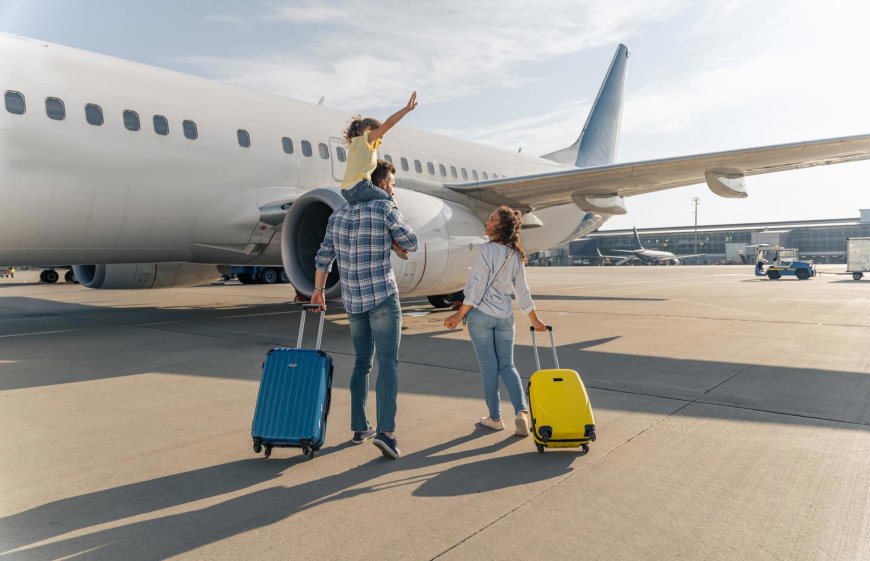From North Africa to Down Under: Navigating Indian Visas for Moroccan Citizens and Indian Visas for Australians

India, a land of mesmerizing contrasts, spiritual profundity, and economic dynamism, consistently draws millions of visitors from across the globe. From the majestic forts of Rajasthan to the serene backwaters of Kerala, and the bustling tech hubs, India offers an unparalleled journey of discovery. For citizens of Morocco and Australia, understanding the nuances of securing an Indian visa is the critical first step towards embarking on this incredible adventure. This article will provide a detailed guide on obtaining an Indian visa for Moroccan citizens and clarify the pathways for Indian visas for Australians, emphasizing the efficiency and convenience of the electronic visa (eVisa) system.
Indian Visa for Moroccan Citizens: E-Visa as the Primary Gateway
For Moroccan citizens, the process of obtaining an Indian visa has been significantly streamlined by the electronic visa (eVisa) system.1 This online platform is the most convenient and common method for securing a visa for most short-term travel purposes, largely eliminating the need for physical visits to an Indian embassy or consulate.
1. Indian e-Visa (e-Tourist, e-Business, e-Medical, e-Medical Attendant, e-Conference, e-Ayush):
Moroccan citizens are fully eligible for India's comprehensive e-Visa facility, which caters to a broad spectrum of travel intentions.2 These include recreational tourism, casual visits to meet friends and relatives, short-term yoga programs, casual business meetings, medical treatments, accompanying a patient for medical care, attending conferences, and seeking traditional Indian medical therapies (Ayush).3
Key features of the e-Visa for Moroccan citizens:
-
e-Tourist Visa: Available in various validities:
-
30 days (double entry, non-extendable, non-convertible, with validity commencing from the date of arrival in India).4
-
1 year (multiple entry, valid for 365 days from the date of Electronic Travel Authorization (ETA) grant, permitting a continuous stay of up to 90 days per visit, and a total stay in India during one calendar year not exceeding 180 days).
-
5 years (multiple entry, with similar stay restrictions to the 1-year visa).
-
e-Business Visa: Valid for one year (365 days) from the date of ETA grant, allowing multiple entries.5 Continuous stays for each visit are generally limited to 180 days. For stays exceeding this duration, registration with the Foreigners Regional Registration Office (FRRO) is mandatory within two weeks after the 180-day period expires.
-
e-Medical Visa and e-Medical Attendant Visa: Typically allow triple entries and a stay of 60 days from the first arrival, with possible extensions in specific circumstances by the FRRO/FRO.6
-
e-Conference Visa: For attending authorized conferences (single entry, usually 30 days validity from the date of arrival).
The e-Visa Application Process for Moroccan Citizens:
-
Online Application: Start by visiting the official Indian e-Visa portal (indianvisaonline.gov.in/evisa/tvoa.html).7 Carefully fill out the detailed online application form, ensuring all personal and passport details precisely match your passport.
-
Document Uploads: You will need to upload a scanned copy of your passport's biographical page (showing your photograph and details) and a recent, high-quality digital passport-sized photograph (50mm x 50mm, with a plain light-colored or white background and a neutral facial expression). Depending on the e-Visa category, additional documents such as an invitation letter (for business or conference) or a hospital letter (for medical) may be required.
-
Online Payment: Pay the applicable e-Visa fee securely online using a credit or debit card. Fees for Moroccan citizens typically align with other eligible nationalities (e.g., around USD $25 for a 30-day e-Tourist visa during peak season, USD $40 for a 1-year, and USD $80 for a 5-year e-Tourist visa, plus a 2.5% bank charge).
-
Receive ETA: Upon successful application and approval, an Electronic Travel Authorization (ETA) will be sent to your registered email address, usually within 3-5 business days.8
-
Travel to India: Print a copy of your ETA and carry it with you. Present it upon arrival at one of the designated Indian Immigration Check Posts (currently 29 airports and 5 seaports). Biometric data will be captured at the immigration counter.
2. Traditional Visas:
For Moroccan citizens requiring long-term stays (e.g., employment, research exceeding eVisa limits, or specific visa categories like journalism), a traditional sticker visa application is necessary. These applications are processed through the Embassy of India in Rabat, Morocco. This process generally involves:
-
Completing an online application form (Regular/Paper Visa Application).
-
Printing, signing, and physically submitting the application form along with your original passport and extensive supporting documents.
-
More extensive documentation based on the specific visa category.
-
Longer processing times compared to the eVisa.
Indian Visas for Australians: Flexible and Predominantly Online
For Australians, India offers highly flexible and widely utilized visa options, with the e-Visa system being the preferred and most efficient route for most short-term visits.9
Key features of the Indian eVisa for Australians:
-
e-Tourist Visa: Available in 30 days (double entry), 1 year (multiple entry), and 5 years (multiple entry). For Australian nationals, a significant advantage is that the continuous stay during each visit on a 1-year or 5-year e-Tourist visa can be up to 180 days, unlike the 90-day limit for most other nationalities. The total stay in India within a calendar year should still not exceed 180 days.
-
e-Business Visa: Valid for one year (365 days) from ETA grant, allowing multiple entries, with each continuous stay not exceeding 180 days.10
-
e-Medical Visa and e-Medical Attendant Visa: For medical purposes, typically allowing triple entries and a 60-day stay.11
-
e-Conference Visa & e-Ayush Visa: For attending authorized conferences or seeking traditional Indian medicine treatments.12
The eVisa Application Process for Australians:
The application steps for Australians are largely identical to those for Moroccan citizens applying for an eVisa:
-
Online Application: Complete the form on the official Indian e-Visa portal (indianvisaonline.gov.in/evisa/tvoa.html).13
-
Document Uploads: Upload scanned passport biographical page and a digital photograph. Specific supporting documents are required for business or medical e-Visas (e.g., invitation letter, hospital letter).14
-
Online Payment: Pay the e-Visa fee online using a credit/debit card. Fees for Australians are comparable to other eligible nationalities (e.g., approximately USD $25 for 30-day, USD $40 for 1-year, USD $80 for 5-year e-Tourist visa, plus service fees).
-
Receive ETA: Get your Electronic Travel Authorization via email upon approval, usually within 2-4 business days.
-
Travel to India: Print your ETA and present it at an authorized Indian Immigration Check Post (29 airports and 5 seaports).
Traditional Visas for Australians:
For Australians requiring long-term visas (e.g., employment, student visas for over six months, or categories not covered by eVisa, such as journalism or if visiting restricted areas), a regular sticker visa application through VFS Global (the outsourced visa application center for the High Commission of India in Australia) is necessary. This involves:
-
Completing an online regular visa application form.
-
Scheduling an appointment at a VFS Global office in Australia.
-
Physically submitting your passport, application form, photographs, and supporting documents.
-
Biometric enrollment is generally mandatory for traditional visas.
-
Processing times can vary, typically taking several weeks.
General Considerations for All Travelers to India
-
Passport Validity: A universal requirement for all Indian visa categories is that your passport must be valid for a minimum of six months from your date of arrival in India and contain at least two blank pages for immigration stamps.
-
Accuracy of Information: Any discrepancies between the information provided in the visa application and your passport details can lead to delays or outright rejection.15 Double-check all entries meticulously.
-
Yellow Fever Vaccination: As of current information (July 2025), neither Morocco nor Australia are typically listed as Yellow Fever risk countries. Therefore, citizens of Morocco and Australians traveling directly from their respective countries to India, without transiting through a Yellow Fever risk country for more than 12 hours, are generally not required to present a Yellow Fever vaccination certificate. However, this information can change, and it is crucial to verify the latest Yellow Fever requirements with the Indian Ministry of Health and Family Welfare or Bureau of Immigration well in advance of your travel.
-
Adherence to Visa Conditions: It is paramount to strictly adhere to the conditions of your visa regarding the purpose of your visit, maximum stay duration, and authorized entry/exit points. Overstaying a visa is a serious offense that can lead to significant fines, deportation, and future entry bans.16
-
Official Sources: Visa regulations are subject to change. Always consult the official website of the Indian Ministry of Home Affairs (indianvisaonline.gov.in), the Indian visa online portal, or the High Commission/Embassy of India in your country for the most current and authoritative information.
In conclusion, both Moroccan citizens and Australians benefit significantly from the efficient e-Visa system for their short-term travel needs to India, greatly simplifying the application process. While traditional visa routes remain available for specific long-term purposes, the Indian eVisa has made travel to India more accessible than ever for nationals of both countries, paving the way for enriching experiences in the subcontinent. Remember to always check the most current information from official Indian government sources before your departure.






































